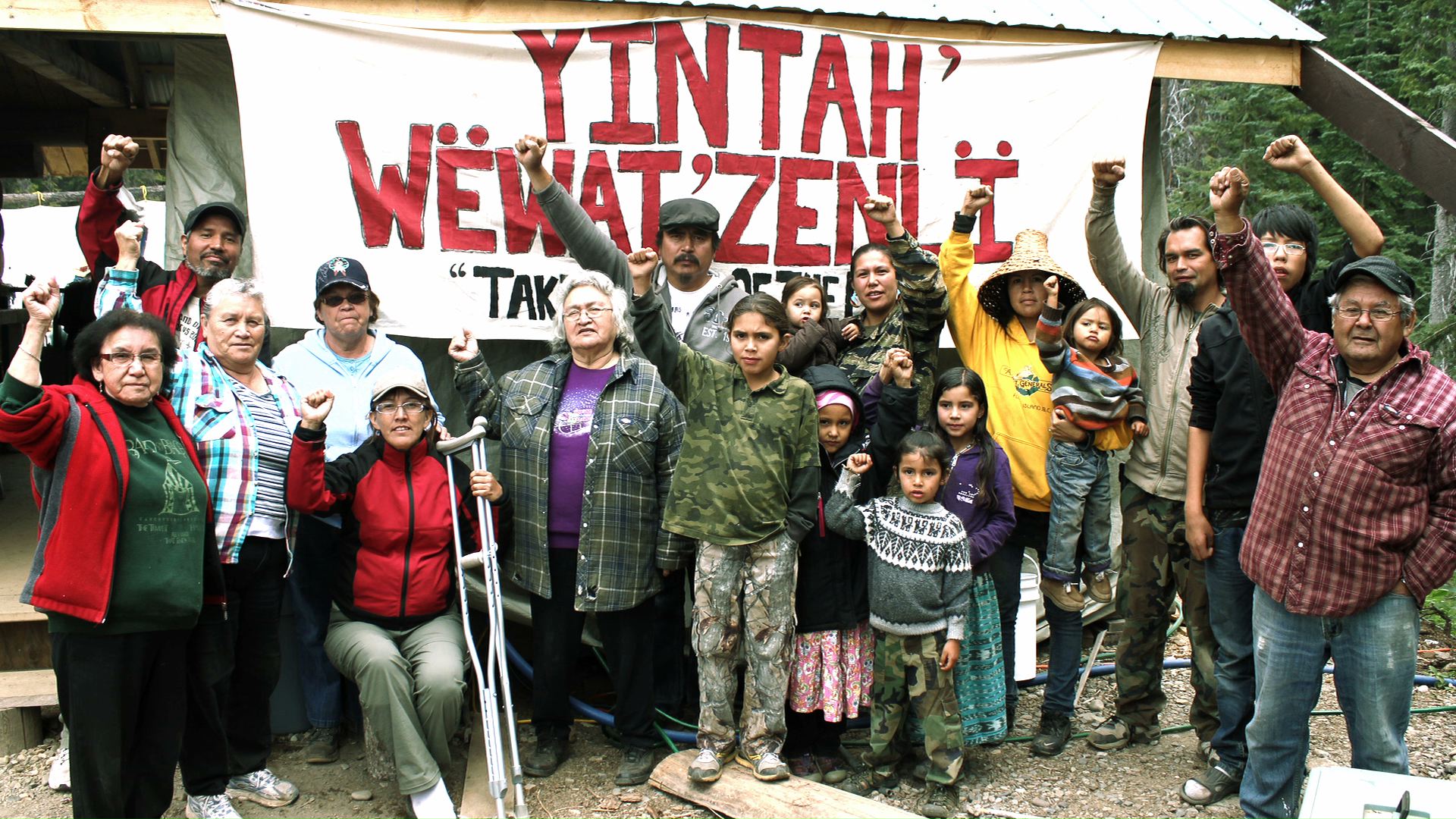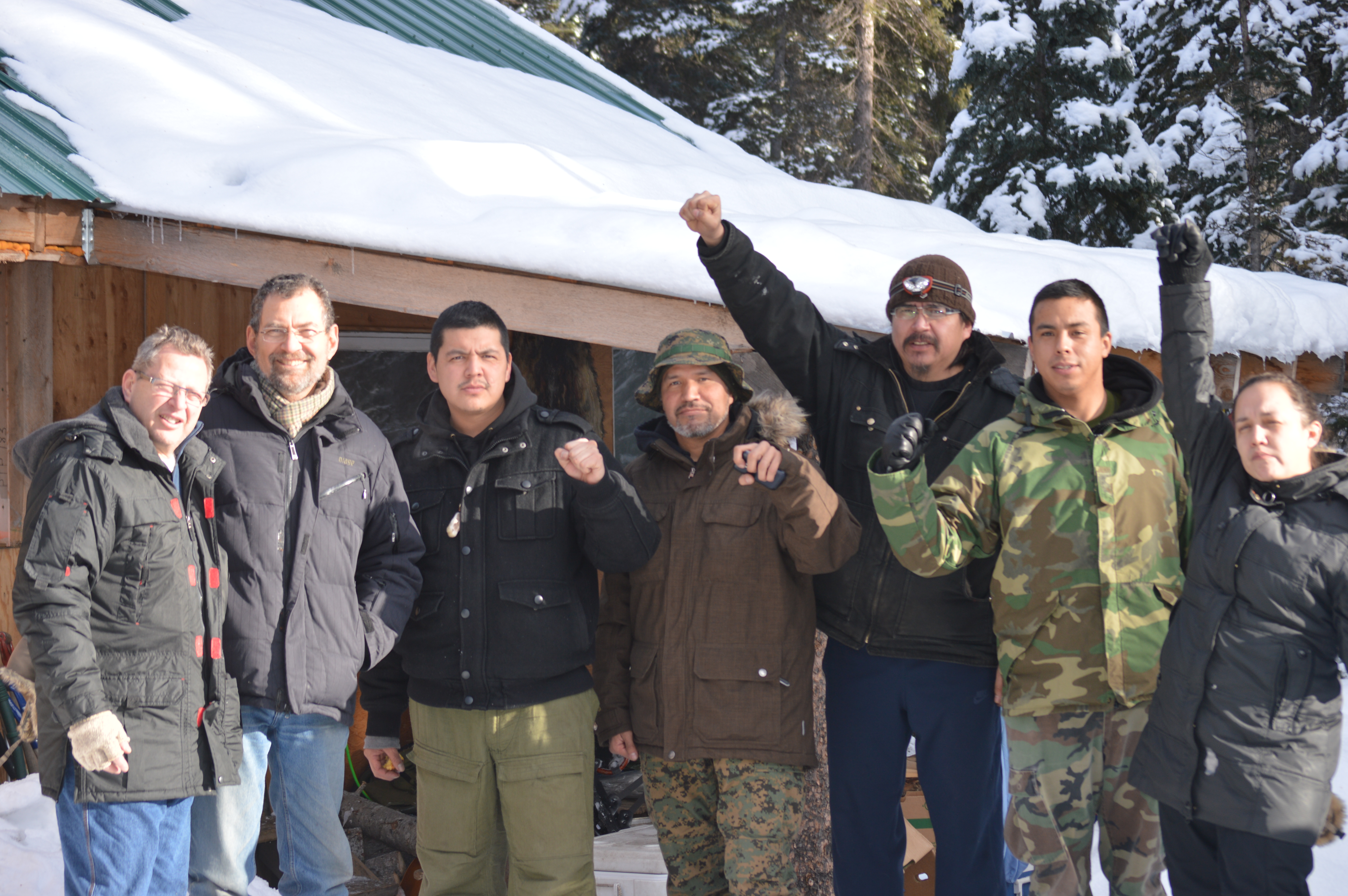It’s been an exciting few weeks for the anti-pipeline movement. There is strong opposition to the Energy East and Line 9 proposals from the prairies to the east coast; west of the Rockies the fight against fracking and bitumen pipelines is heating up.
People are busily preparing to intervene in the NEB’s Kinder Morgan hearings. Hundreds attended weekend direct action workshops in Victoria and Vancouver. The traditional land defenders of the Unist’ot’en are gearing up in response to threats from the provincial government and corporations pushing their fracked gas project across the north.
But among all this activity there is something missing: the sense of confidence that comes from having a clear and coherent strategy. The wind is in the sails but no one is at the helm. The good news is that when I was up north at the Unistoten blockade camp in February with other anti-pipeline activists we brainstormed the winning strategy.

Plan A
While on the trap-line it occurred to us that we could adapt the techniques to stop the SWAT teams. Put together some extra large box traps, place them along the border of the territory, bait them with Tim Horton’s Boston creams (who can resist that sweet combination of chocolate icing and vanilla filling?) and entice them in with a trail of candy sprinkles. Brilliant! Then we realized that after the first dozen or two didn’t come back someone in the chain of command might realize something was up.
So we moved on to Plan B.
Plan B
Plan B is a blockade by First Nations land defenders and activist allies. On reflection however, we saw a major weakness. No matter how we escalated numbers and tactics the government could always up the ante to the next level of force. Isolated in the north, a long way from even the nearest town, we could slow but not stop pipeline construction.
So, we looked briefly at a Plan C.
Plan C
Plan C is relying on petitions, regulatory interventions, rallies and marches. But that is not likely to work with the current provincial or federal governments or any likely alternatives on the horizon.
Then the brainwave hit us!
Both B and C by themselves are like the sound of one hand clapping. But what if we combined the two? What if the militants on the blockade line were not isolated? What if the marches and rallies in the cities were not just for show — drumming, speakers, music and then everyone home for dinner and a warm bed? What if we built a movement that responded dramatically right in the centres of power to any and all attempts to break the blockade?

What if logistical support, reinforcements and funding for legal challenges poured in from around the province and across the country? What if the unions who have come out against the pipelines sent people to stand with First Nations protecting the land? And what if those unions backed up their members with the threat — and maybe the reality — of industrial action if they were attacked?
What if we don’t allow ourselves to be divided over tactical differences; who is too radical, who is too moderate, who looks scary with a bandana over their face, who is wearing a suit and tie? What if we actually stand together across all the differences of age and politics and styles to defend the land, the waters — indeed all life on this fragile and beautiful planet?
That is Plan D.
Plan D
Plan D is a strategic plan that can actually stop the pipelines. In fact it is the only one that can.
You might say that would be fine if publishing this piece had not given away the element of surprise. Except the other side has always known about this plan, indeed it is the only one they are really afraid of. That is why we can be confident it is the winning strategy.
Wikileaks’ expose of Stratfor’s strategic advice to the tar sands industry gave the game away. The goal has always been divide and conquer. Use the opportunists, isolate the radicals, co-opt the moderates, neutralize the idealists. Our response has to be the opposite; bridging divides, foster mutual understanding and solidarity, stand together come hell or high water.
The really good news is key people from the radical and moderate wings met recently and committed themselves to pursuing this strategy. But the anti-pipeline movement is composed of thousands of individuals and autonomous groups and organizations. No one can issue orders or make commitments for others.
All we can do is argue and hopefully persuade. Each of us alone has to decide if we will be part of the problem or part of the solution. We’ve been back on our heels for a long time. We’ve gotten used to protesting but not really expecting to change anything. But now we can — if we are united around this winning strategy. Are you ready to make that sort of commitment? Are you ready to win for a change?
Bob Ages has been an activist for social justice since the 1960s, including 20 years on the national board of the Council of Canadians. In mid May he will be heading up to the Unistoten blockade camp with a volunteer group of carpenters and supporters to take part in the annual spring construction and permaculture mobilization.
Photos courtesy of Robert Ages.



